Deep beneath the volcanic landscape of Hawaii’s Big Island lies a hidden world that defies imagination. Stretching through darkness for over 40 miles, the Kazumura Cave system represents Earth’s longest and deepest lava tube—a natural subway tunnel carved by rivers of molten rock thousands of years ago. But this isn’t just another geological wonder gathering dust in scientific journals. This underground realm pulses with life, hosting bizarre ecosystems that challenge everything we thought we knew about where life can thrive.
What Makes Kazumura Cave So Extraordinary
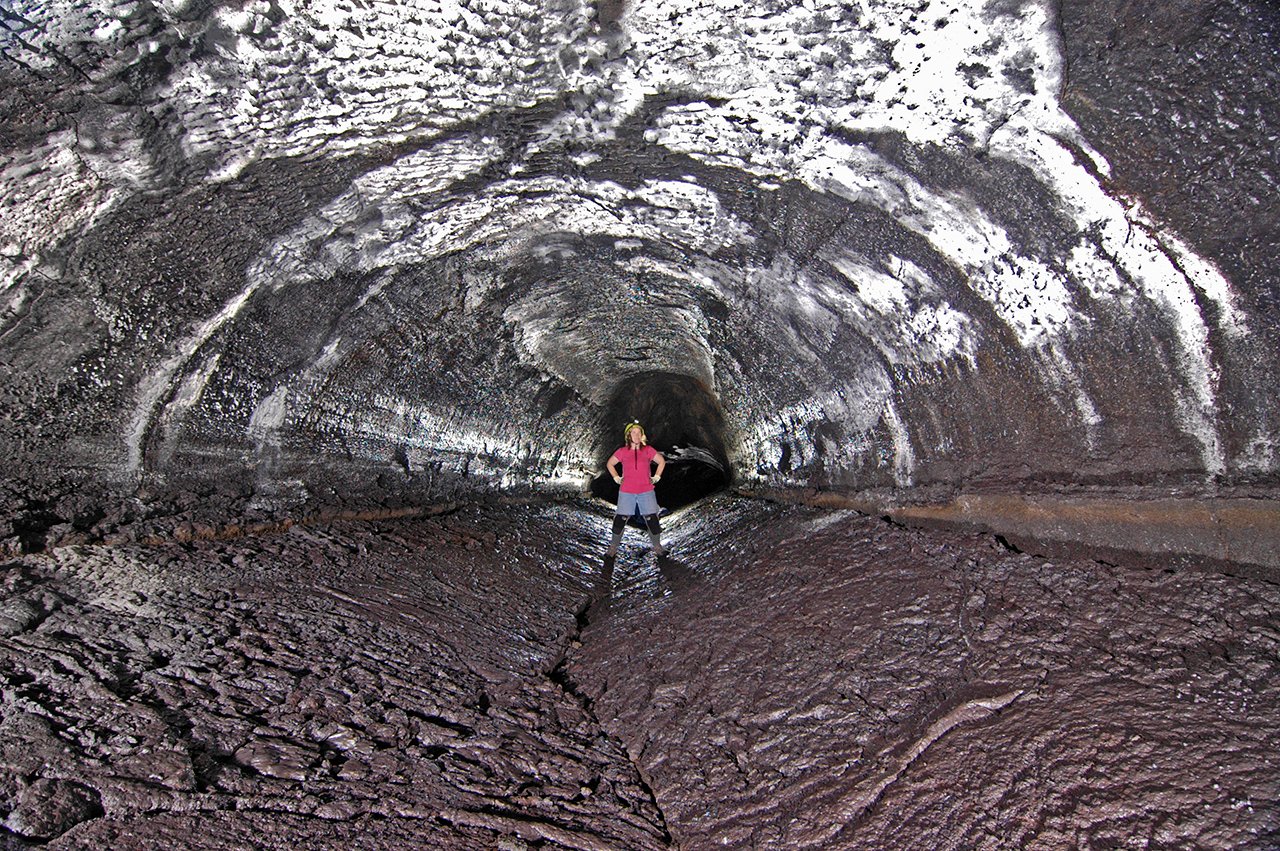
The Kazumura Cave system stretches an astounding 40.7 miles through the southeastern slopes of Kilauea volcano, making it the world’s longest lava tube by a massive margin. Its deepest surveyed point plunges 3,614 feet below the surface, creating a vertical maze that would swallow a skyscraper whole. Unlike the cramped passages you might imagine, some sections of this underground highway are large enough to drive a truck through. The cave formed between 350 and 500 years ago when streams of lava carved these tunnels during one of Kilauea’s most productive periods. What’s truly mind-blowing is that scientists believe they’ve only mapped about half of the system—meaning there could be another 40 miles of unexplored passages waiting in the darkness.
The Birth of an Underground Giant
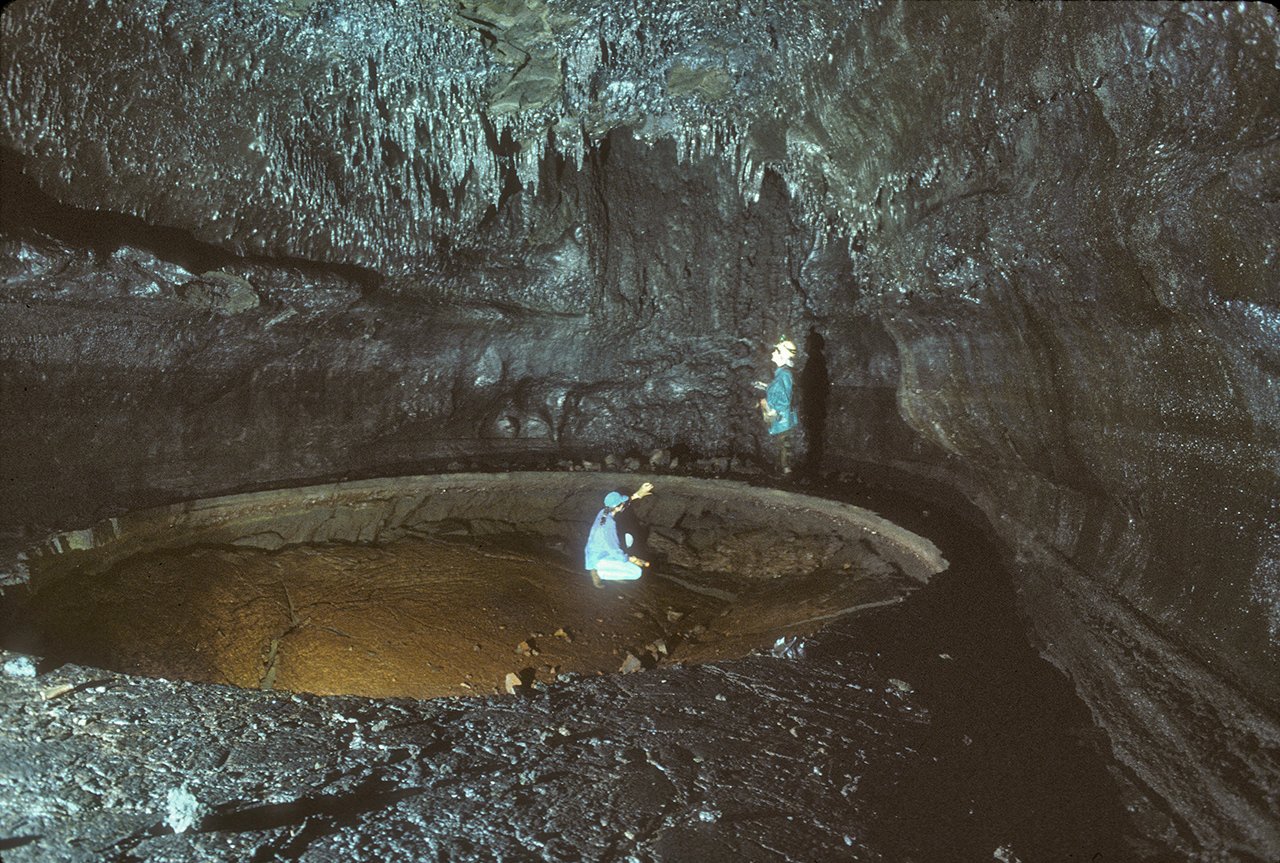
Picture a river of lava flowing downhill at temperatures exceeding 2,000 degrees Fahrenheit. As this molten stream travels, its outer edges cool and harden into a protective shell while the interior remains liquid and continues flowing. When the lava source eventually stops feeding the flow, the liquid interior drains away, leaving behind a hollow tube—nature’s own subway tunnel. The Kazumura system formed through this exact process, with multiple lava flows creating a complex network of interconnected passages over several decades. The sheer scale of these flows tells us that Kilauea was pumping out lava at an incredible rate, creating what geologists call a “master tube” system. Think of it like a massive underground highway with multiple on-ramps and off-ramps, all carved by rivers of liquid rock.
Temperature Mysteries in the Depths
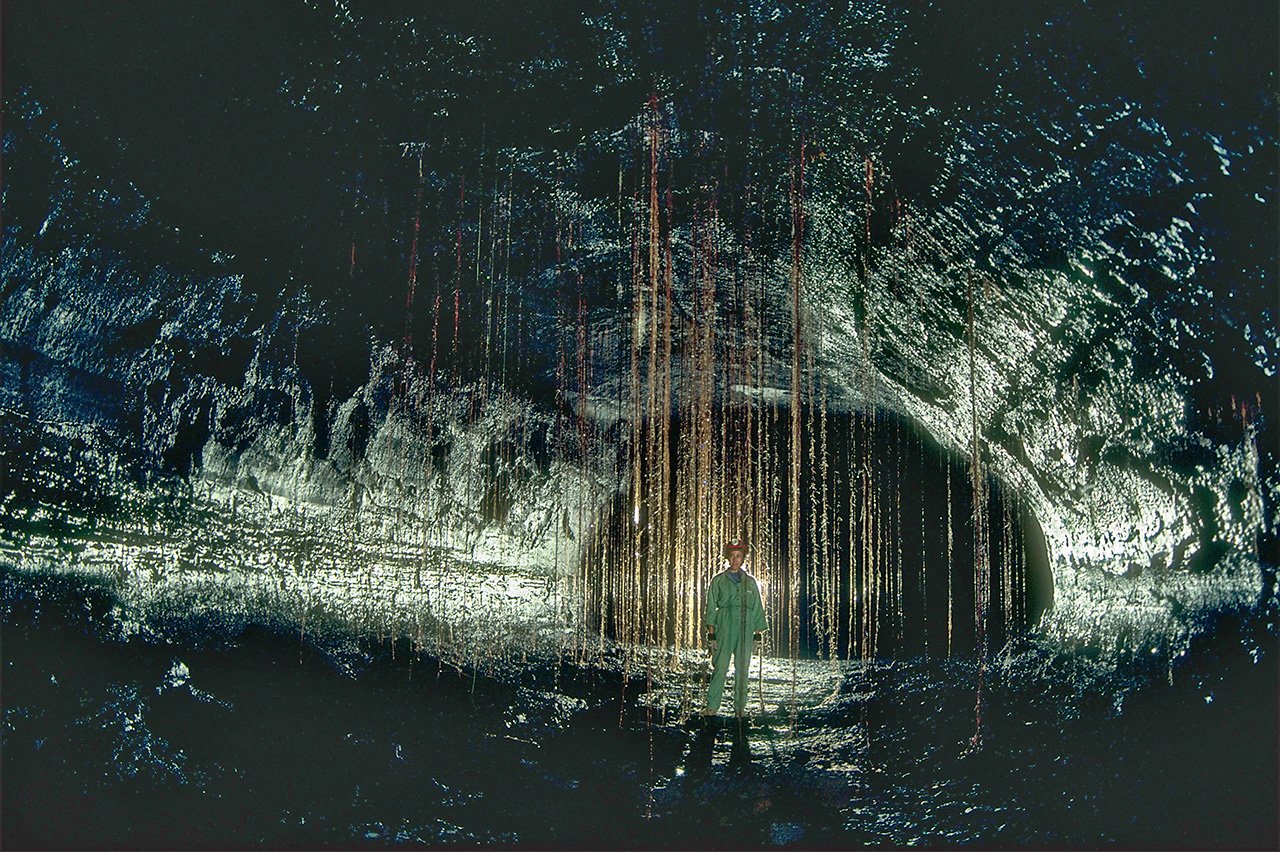
Step into Kazumura Cave and you’ll experience something remarkable—the temperature remains a constant 70 degrees Fahrenheit year-round, regardless of what’s happening on the surface above. This thermal stability occurs because the cave lies deep enough to tap into the Earth’s geothermal baseline, creating a natural climate-controlled environment. During Hawaii’s hot summer days, the cave entrance actually breathes cool air outward, while in cooler periods, warm air flows from the depths. Scientists have discovered that different sections of the cave maintain slightly different temperatures based on their depth and connection to surface openings. This temperature regulation has created microclimates within the cave system, each supporting different types of life adapted to those specific conditions.
The Surprising Humidity Factory
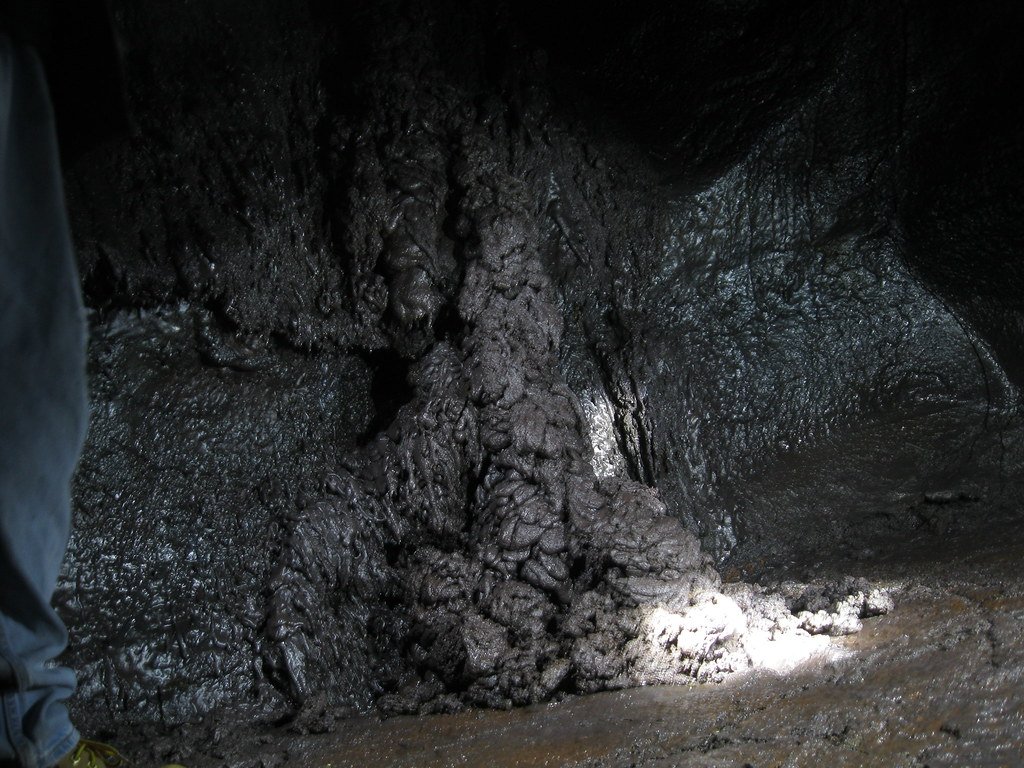
Despite being essentially a giant underground tunnel, Kazumura Cave maintains humidity levels that would make a rainforest jealous. The constant 95-100% humidity comes from groundwater seepage and the cave’s natural air circulation system, creating an environment that’s perpetually saturated with moisture. This high humidity acts like a life-support system for the cave’s inhabitants, preventing them from drying out in what could otherwise be a harsh underground desert. The moisture also plays a crucial role in the cave’s ongoing formation, slowly dissolving and reshaping the volcanic rock over time. Visitors often notice that their glasses fog up immediately upon entering, and the air feels thick and almost breathable in its richness.
Light Zones and the Realm of Eternal Darkness

Like most cave systems, Kazumura is divided into distinct light zones that determine what can live where. The entrance zone receives filtered sunlight and supports plants and animals that can handle reduced light conditions. Beyond this lies the twilight zone, where only the faintest traces of light penetrate, and finally the aphotic zone—a realm of absolute darkness that comprises 95% of the cave system. In this dark zone, the rules of life change completely, and organisms must survive without any energy from the sun. The boundaries between these zones shift throughout the day and seasons, creating dynamic transitions that some species have learned to exploit. What’s fascinating is that each zone has developed its own unique community of organisms, like separate countries with their own cultures and survival strategies.
The Root Mat Phenomenon
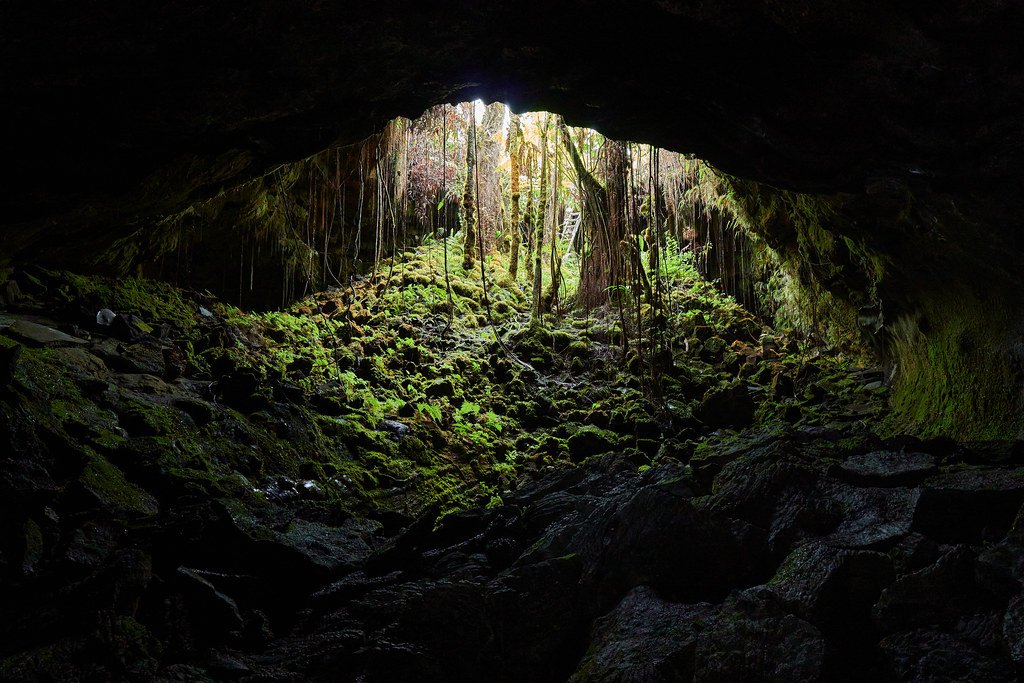
One of Kazumura Cave’s most spectacular features is its extensive root mat systems—thick carpets of plant roots that dangle from the ceiling like organic stalactites. These roots belong to surface plants that have somehow found their way through cracks and openings in the volcanic rock above, sometimes extending down 100 feet or more into the cave. The root mats create hanging gardens in the darkness, providing both habitat and food for the cave’s inhabitants. Some roots are as thick as your arm and form complex networks that can span entire chamber walls. These biological curtains serve as highways for cave-dwelling creatures and create microclimates by trapping moisture and organic matter that falls from above.
Cave-Adapted Spiders and Their Hunting Strategies
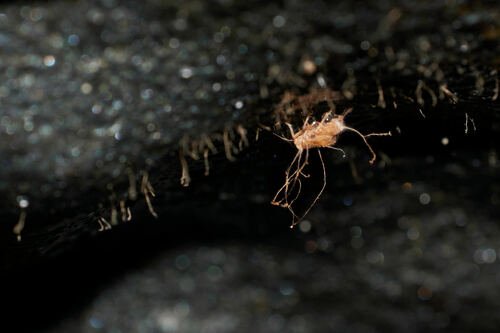
The darkness of Kazumura Cave has produced some truly remarkable spiders that have evolved incredible hunting strategies without relying on sight. The Hawaiian cave wolf spider has developed enhanced sensory abilities, using vibrations and chemical cues to locate prey in complete darkness. These spiders have longer legs than their surface relatives, helping them navigate the irregular cave surfaces and detect the slightest movements of potential meals. Some species have even lost their ability to produce pigment, appearing almost translucent in bright light—a classic example of cave adaptation. Their webs are architectural marvels designed to catch flying insects that venture into the cave or to trap creatures moving along the cave walls.
The Mysterious World of Cave Crickets
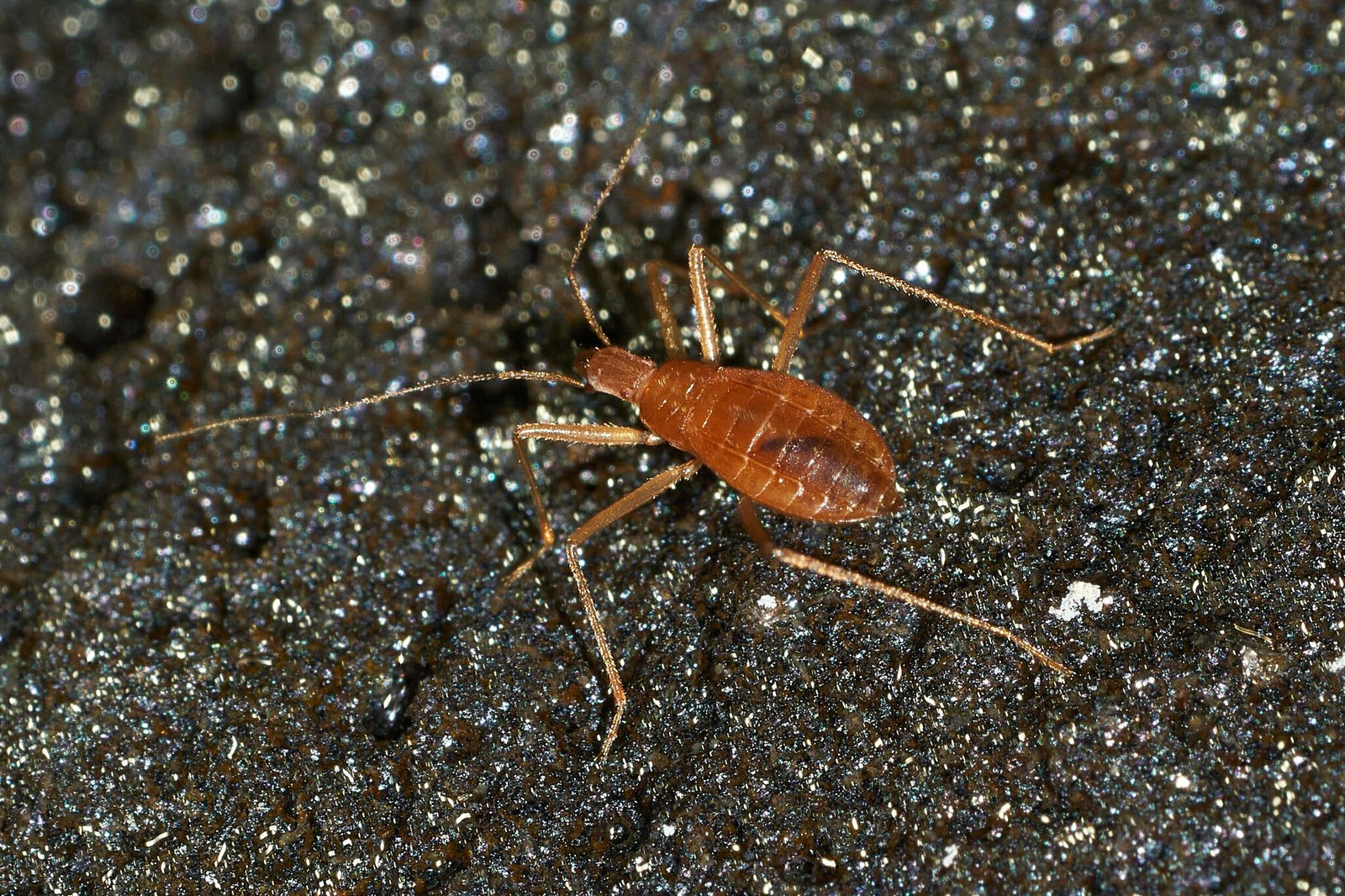
Kazumura’s cave crickets represent one of the most successful cave-adapted insect groups, having evolved remarkable features for underground survival. These crickets have developed extraordinarily long antennae—sometimes twice their body length—that function like biological radar systems in the darkness. Their legs have become longer and more sensitive, allowing them to detect vibrations from predators or prey across the cave floor. Unlike their surface cousins, cave crickets have lost the ability to fly but gained incredible jumping abilities that help them escape danger in the confined spaces. They feed on organic matter that washes into the cave and play a crucial role in the cave’s food web by converting this external energy into food for other cave dwellers.
Blind Cave Fish and Aquatic Mysteries
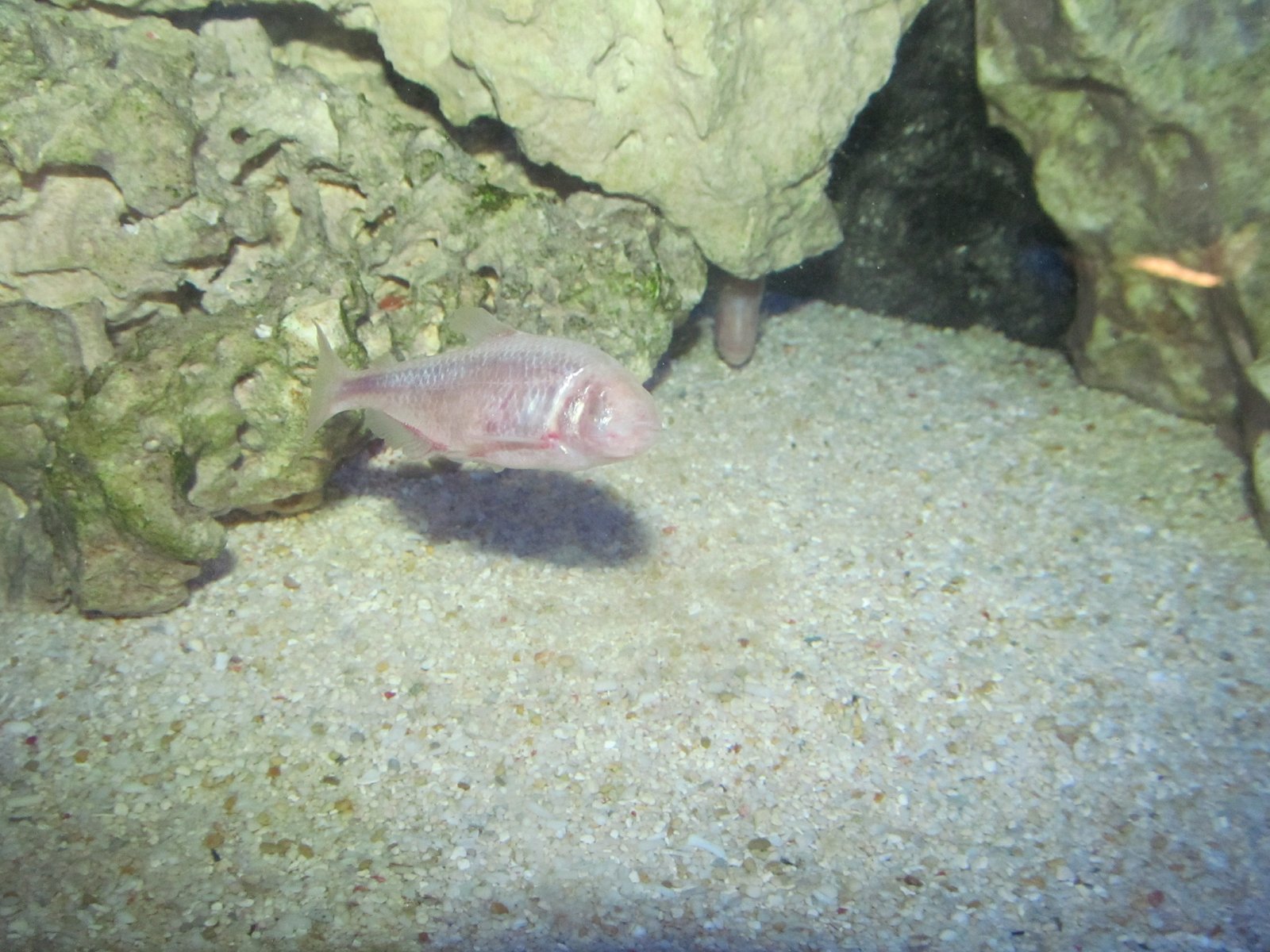
In the deeper pools and underground streams of Kazumura Cave, scientists have discovered populations of cave-adapted fish that represent some of the most extreme examples of evolutionary adaptation. These fish have completely lost their eyes over thousands of generations, with the eye sockets sometimes filled in entirely or reduced to tiny remnants beneath the skin. Their other senses have become incredibly acute, with enhanced lateral line systems that detect the slightest water movements and pressure changes. The fish navigate their dark aquatic world using a combination of chemical detection, water flow sensing, and echolocation-like abilities. What’s remarkable is that despite being blind, these fish can navigate complex underwater cave systems with pinpoint accuracy, finding food and avoiding obstacles better than many sighted fish in clear water.
Microbial Communities in Extreme Conditions

The walls and floors of Kazumura Cave host incredible communities of microorganisms that thrive in conditions that would kill most surface life. These bacterial and fungal communities have adapted to survive without sunlight, instead deriving energy from chemical processes involving volcanic minerals and organic matter. Some of these microbes can break down compounds that are toxic to other life forms, essentially eating poison and converting it into harmless byproducts. The cave’s constant temperature and high humidity create perfect conditions for these microbial communities to flourish and form complex ecosystems at the microscopic level. These tiny organisms serve as the foundation of the cave’s food web, supporting larger creatures that feed on them or on the organic matter they help decompose.
The Role of Guano in Cave Ecosystems

While Kazumura Cave isn’t home to large bat colonies like some cave systems, the small amounts of bat guano present play an outsized role in supporting cave life. This nitrogen-rich fertilizer creates hotspots of biological activity wherever it accumulates, supporting dense communities of insects, fungi, and bacteria. The guano acts like biological rocket fuel, providing concentrated nutrients that are otherwise scarce in the cave environment. Even tiny amounts can transform a barren cave passage into a thriving microecosystem teeming with invertebrates. Scientists have discovered that areas with guano deposits support ten times more life than similar areas without this natural fertilizer.
Unique Evolutionary Adaptations

The isolation and extreme conditions of Kazumura Cave have created a natural laboratory for evolution, producing species with adaptations that seem almost alien. Many cave-dwelling creatures have developed enhanced senses of touch and chemical detection to compensate for the lack of light. Some species have evolved transparent or pale coloration since camouflage pigments provide no advantage in complete darkness. Cave-adapted animals often have slower metabolisms and longer lifespans than their surface relatives, adaptations that help them survive in an environment where food is scarce and unpredictable. The most striking adaptation is the tendency for cave animals to become larger than their surface counterparts—a phenomenon called cave gigantism that scientists are still working to understand.
Food Webs Without Sunlight

The food web in Kazumura Cave operates on completely different principles than surface ecosystems, relying on imported organic matter rather than photosynthesis. Dead plant material, insects, and other organic matter that washes or falls into the cave from above forms the base of this unique food web. Decomposer organisms break down this material, making nutrients available to primary consumers like cave crickets and other invertebrates. These primary consumers then become food for predators like spiders and cave-adapted beetles, creating a complex network of energy transfer in the darkness. What’s fascinating is how efficiently this system operates—very little energy is wasted, and every scrap of organic matter is recycled multiple times through the food web.
Water Features and Underground Streams

Throughout Kazumura Cave, water plays a crucial role in shaping both the physical environment and the biological communities. Underground streams carry fresh organic matter deep into the cave system, creating lifelines that support diverse communities along their banks. Permanent pools serve as oases in the underground desert, supporting aquatic species and providing drinking water for terrestrial cave dwellers. The constant dripping and seepage of groundwater creates unique microhabitats where specialized organisms thrive in the film of water coating cave walls. These water features also serve as highways for the movement of nutrients and organisms throughout the cave system, connecting distant chambers and passages into a single, integrated ecosystem.
The Cave’s Role in Groundwater Systems

Kazumura Cave functions as a massive underground drainage system, channeling groundwater through the volcanic bedrock of Hawaii’s Big Island. This hydrological role makes the cave crucial for the island’s water cycle, helping to filter and transport fresh water from the mountains to the sea. The cave’s passages act like underground rivers during heavy rains, quickly moving large volumes of water and preventing surface flooding. This water movement also transports nutrients and organic matter throughout the cave system, supporting life in chambers that might otherwise be biological deserts. Scientists studying the cave’s hydrology have discovered that it connects to the island’s broader groundwater system in ways that could affect water quality and availability across the region.
Conservation Challenges and Human Impact

Despite its remote location and challenging access, Kazumura Cave faces increasing pressure from human activities that threaten its delicate ecosystems. Surface development above the cave can alter groundwater flow patterns and introduce pollutants that eventually reach the underground environment. Tourism, while providing economic benefits and raising awareness about cave conservation, also brings risks of habitat disturbance and the introduction of invasive species. The cave’s entrance areas are particularly vulnerable to trampling and light pollution, which can disrupt the natural boundaries between different ecological zones. Climate change poses additional threats by potentially altering rainfall patterns and groundwater levels that the cave’s ecosystems depend on.
Scientific Research and Discoveries

Kazumura Cave serves as a living laboratory where scientists study evolution, ecology, and geology in one of Earth’s most extreme environments. Researchers have discovered dozens of species that exist nowhere else on Earth, many of which are still being described and studied. The cave provides insights into how life adapts to extreme conditions, information that could be valuable for understanding life on other planets or in other harsh environments. Ongoing research includes studies of the cave’s unique chemistry, the genetics of cave-adapted species, and the complex interactions between geology and biology in underground systems. Each expedition into the cave’s unexplored sections reveals new species and ecological relationships, suggesting that we’ve only scratched the surface of understanding this underground world.
Comparing Kazumura to Other Lava Tubes
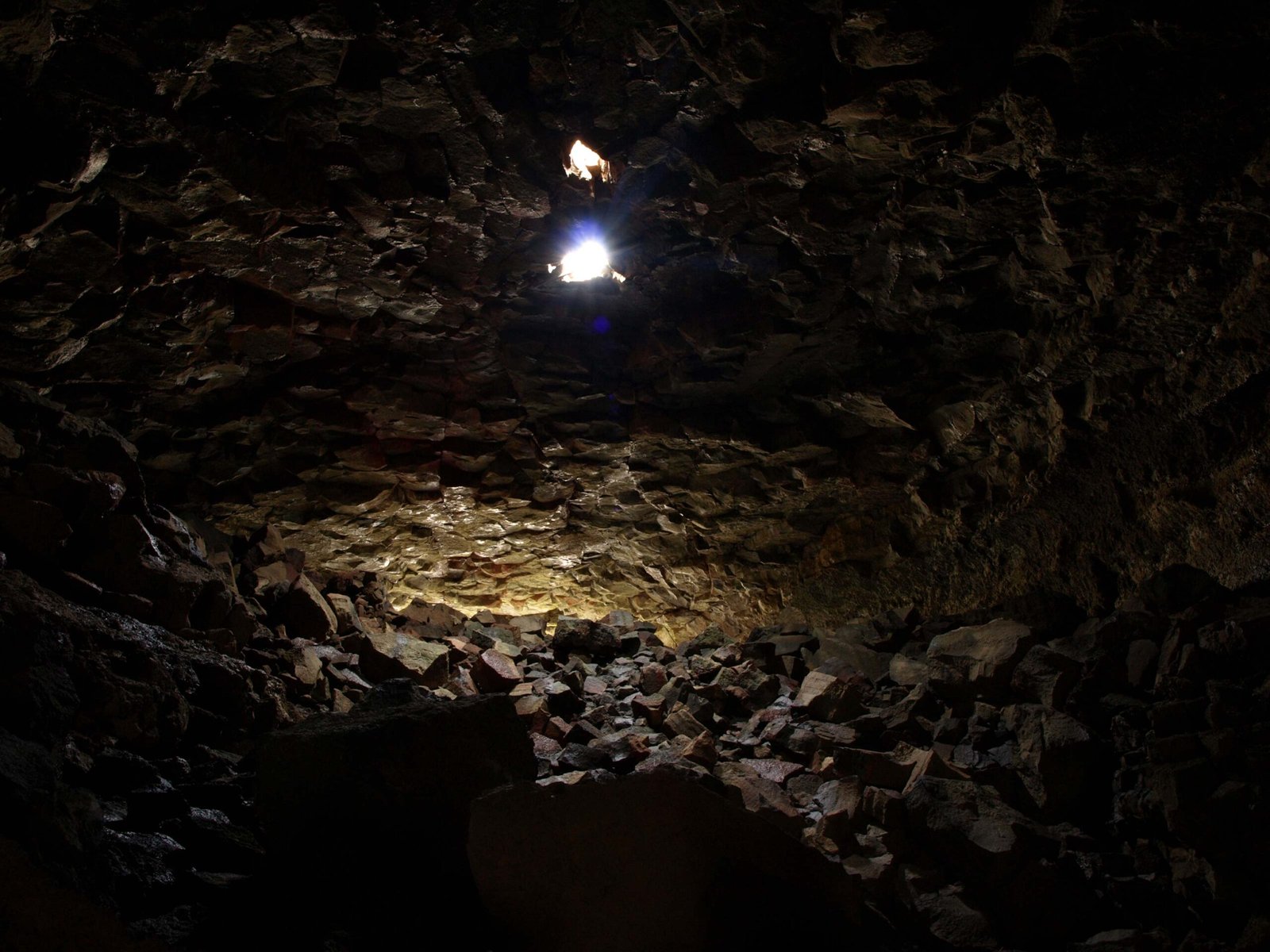
While lava tubes exist on every continent and even on other planets, Kazumura Cave stands out for its exceptional length, depth, and biological diversity. Most lava tubes are relatively short and simple, formed by small lava flows that create single passages a few hundred feet long. Kazumura’s complexity rivals that of limestone cave systems that take millions of years to form, yet it was carved in just a few decades of volcanic activity. The cave’s tropical location and consistent climate have allowed it to support far more diverse ecosystems than lava tubes in colder or more arid regions. Scientists often use Kazumura as the gold standard when studying lava tube ecosystems, and its unique features have influenced our understanding of how life colonizes and adapts to underground environments worldwide.
Future Exploration and Unknown Territories

Despite decades of exploration, scientists estimate that only about half of Kazumura Cave has been mapped and studied, leaving thousands of feet of passages yet to be explored. Each new expedition pushes deeper into unmapped territory, often discovering new chambers, species, and ecological relationships. The cave’s deepest sections remain largely unexplored due to technical challenges and safety concerns, but advances in cave exploration technology are opening up new possibilities. Future exploration priorities include mapping the cave’s full extent, conducting comprehensive biological surveys of unexplored areas, and studying the cave’s connections to other underground systems. The potential for discovering new species and ecological processes in these unexplored areas keeps scientists excited about what lies ahead in the darkness.
The Kazumura Cave system represents one of nature’s most extraordinary achievements—a 40-mile underground world that supports thriving ecosystems in perpetual darkness. From transparent spiders to blind fish, from hanging root gardens to microscopic communities that eat volcanic minerals, this lava tube demonstrates life’s incredible ability to adapt and flourish in the most unlikely places. As we continue to explore and study this underground realm, each discovery reminds us that Earth still holds countless secrets waiting to be revealed. What other hidden worlds might be thriving beneath our feet, completely unknown to science?




